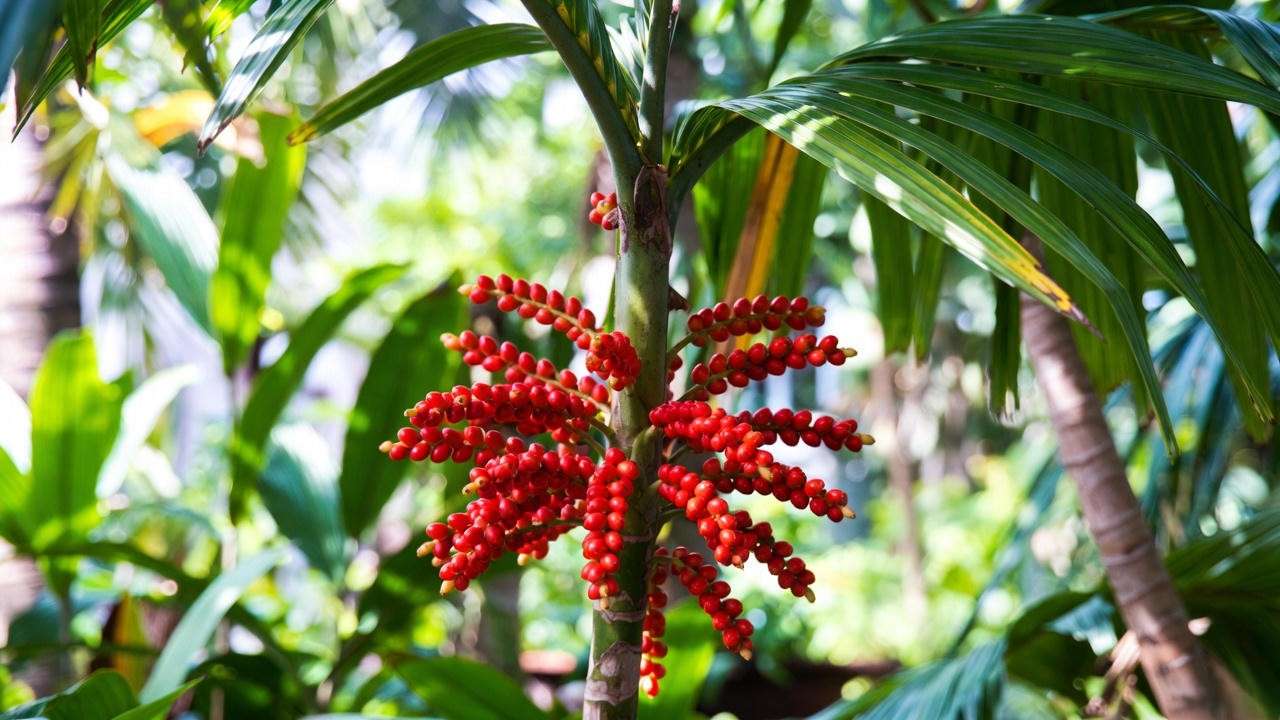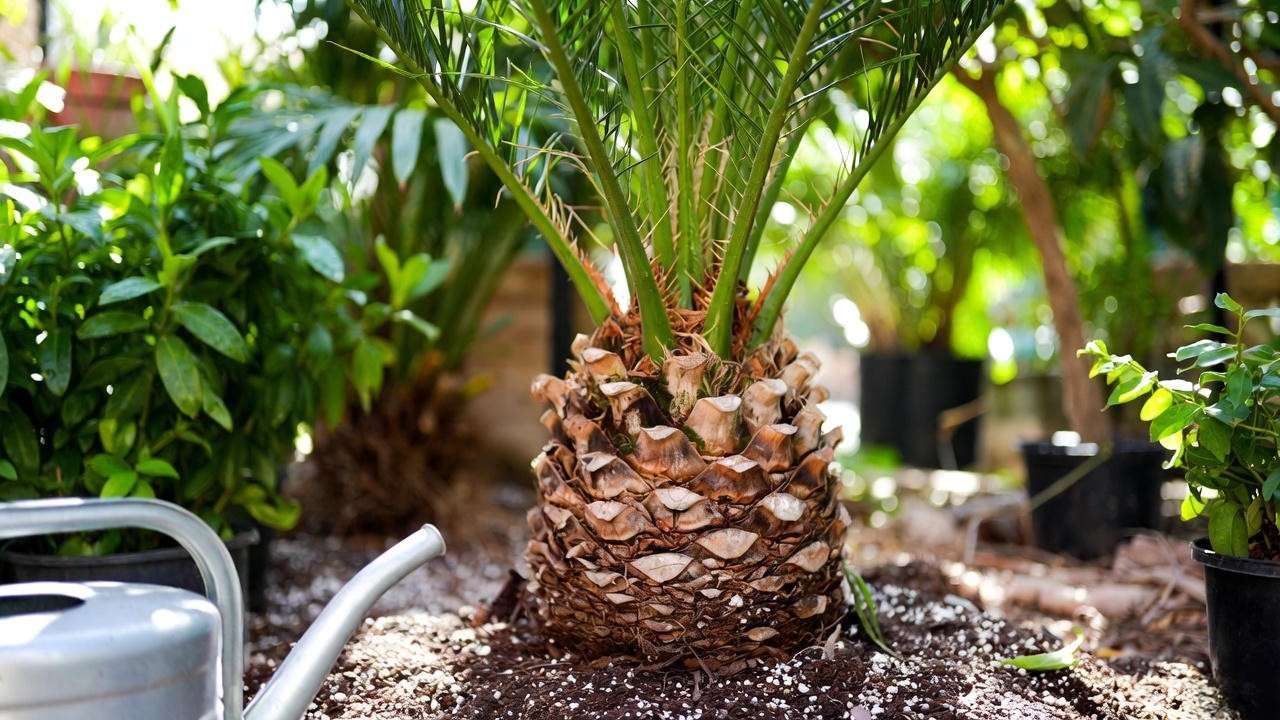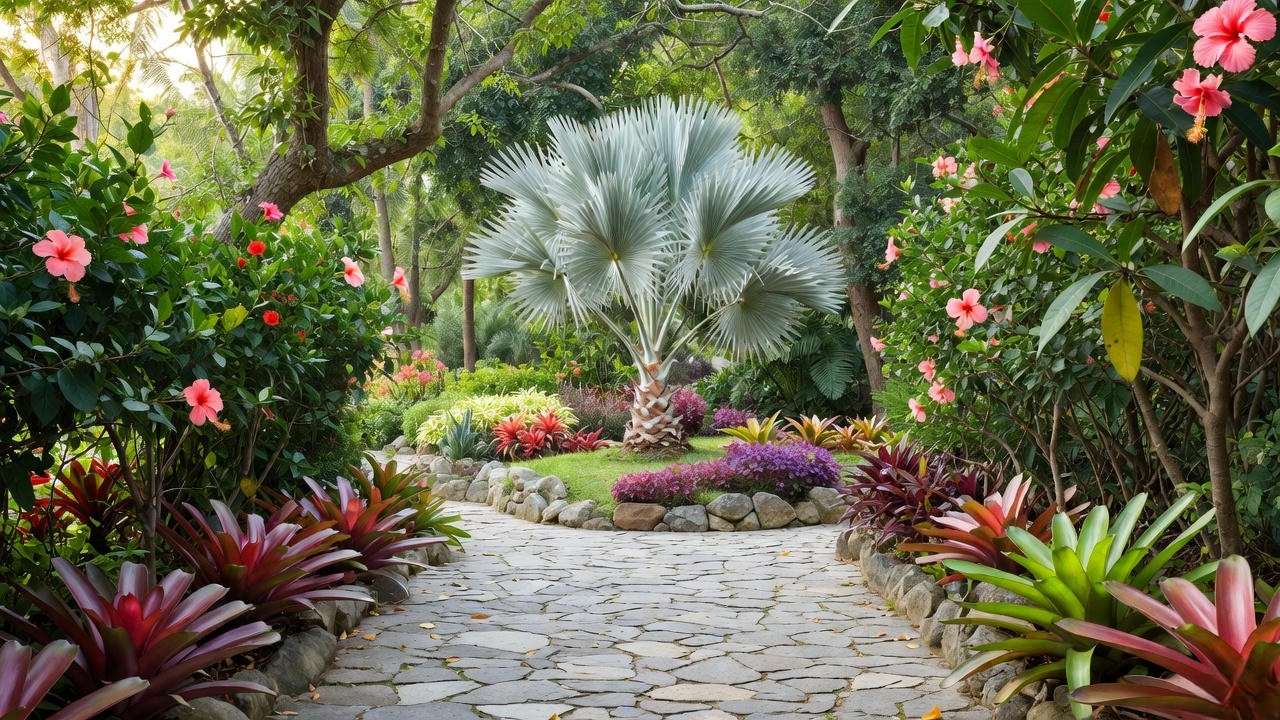Imagine stepping into your backyard, greeted by the lush, feathery fronds of an Adonidia palm tree swaying gently in the breeze, its vibrant red fruit clusters sparkling like holiday ornaments. Known as the Christmas Palm, this tropical beauty transforms any space into a paradise. But here’s the catch: keeping your Adonidia palm tree thriving requires more than just planting it and hoping for the best. Yellowing fronds, stunted growth, or pesky pests can turn your dream plant into a headache. Don’t worry! This comprehensive guide delivers seven expert tips, backed by horticultural science and real-world experience, to ensure your Adonidia palm flourishes year-round. Whether you’re a seasoned gardener or a tropical plant newbie, you’ll find practical, actionable advice to make your Christmas Palm the star of your space. Ready to dive in? Let’s grow! 🌱 Word Count: ~150 words
What Makes the Adonidia Palm Tree So Special? 🌴
A Quick Introduction to the Christmas Palm
The Adonidia palm tree, scientifically known as Adonidia merrillii, hails from the Philippines and is a favorite among tropical plant enthusiasts. Its compact size—typically 6 to 20 feet tall—makes it ideal for small gardens, patios, or even indoor spaces. The palm’s glossy, arching fronds and clusters of bright red fruit, which appear in winter, earn it the nickname “Christmas Palm.” According to the University of Florida’s IFAS Extension, this species thrives in warm, humid climates and is relatively low-maintenance when cared for properly. Its elegant silhouette and festive fruit make it a standout choice for homeowners and landscapers alike.

Why Choose an Adonidia Palm for Your Space?
What sets the Adonidia palm apart from other tropical palms like the Majesty or Areca? For starters, its petite stature fits perfectly in tight spaces, unlike larger species that dominate landscapes. It provides just enough shade for a cozy patio without overwhelming the area. Plus, its vibrant fruit adds a pop of color, enhancing curb appeal. Compared to high-maintenance palms, the Adonidia is forgiving, making it a great pick for beginners. Whether you’re creating a tropical oasis or adding flair to a container garden, this palm delivers beauty and versatility. Pro Tip: Pair it with low-growing plants like bromeliads for a stunning effect! 🌺 Word Count: ~250 words
Understanding the Needs of Your Adonidia Palm Tree 🌞
Ideal Climate and Growing Zones
The Adonidia palm tree loves warmth and humidity, thriving in USDA Hardiness Zones 10-11. Think sunny locales like South Florida, Southern California, or Hawaii. It basks in temperatures above 60°F, with ideal conditions between 70-90°F. If you live in a cooler region, don’t despair! You can grow your Christmas Palm in a container and bring it indoors during chilly months. A greenhouse or sunny room with a grow light can mimic its tropical home. Expert Insight: The Royal Horticultural Society notes that maintaining consistent warmth is key to preventing stress in tropical palms.
Soil, Light, and Water Requirements
To keep your Adonidia palm happy, start with the right foundation: soil. It prefers well-draining, slightly acidic soil (pH 6.0-7.0). A mix of potting soil, sand, and perlite works wonders for both ground and container planting. For light, aim for full sun to partial shade—about 6 hours of direct sunlight daily. Indoor palms may need supplemental grow lights to thrive. Watering is where many go wrong. Keep the soil consistently moist but never soggy. Allow the top inch to dry out between waterings to avoid root rot. Real-World Example: A Florida gardener revived her wilting Adonidia by improving drainage with a raised bed, proving small tweaks can make a big difference! 💧

7 Expert Tips for Adonidia Palm Tree Care 🌿
Tip 1: Perfect Your Watering Routine 💧
Watering is the cornerstone of Adonidia palm tree care, but it’s easy to overdo it. Aim to water deeply once or twice a week, depending on climate and soil drainage. In hot, dry conditions, you may need to water more frequently, while cooler months call for less. Overwatering is a top culprit for root rot, signaled by mushy roots or yellowing fronds. Pro Tip: Invest in a moisture meter (around $10 online) to gauge soil moisture accurately, especially for potted palms. For indoor plants, ensure pots have drainage holes to prevent water buildup. Consistency is key—set a schedule and stick to it!
Tip 2: Feed Your Palm the Right Nutrients 🍎
Like any plant, the Adonidia palm tree needs proper nutrition to shine. Use a slow-release fertilizer formulated for palms, such as an 8-2-12 NPK blend, applied every 3-4 months during the growing season (spring to fall). Potassium and magnesium deficiencies are common, causing yellowing or brown-tipped fronds. A 2019 study in the Journal of the American Society for Horticultural Science found that balanced micronutrients significantly boost palm health. Look for fertilizers with added micronutrients like manganese and iron. Expert Tip: Apply fertilizer 6-12 inches from the trunk to avoid burn, and water thoroughly after feeding.
Tip 3: Prune with Care ✂️
Pruning keeps your Adonidia palm looking tidy, but less is more. Only remove fully brown or yellow fronds, as green fronds still contribute to photosynthesis. Use sharp, sterilized pruning shears to make clean cuts near the trunk, avoiding damage to healthy tissue. Over-pruning can stress the palm, reducing its vigor. Safety Note: Never climb or use heavy machinery without proper training—hire a certified arborist for tall palms. Prune in spring or early summer for best results, and dispose of debris to prevent pest habitats. Your palm will thank you with lush, vibrant growth!
Tip 4: Protect Against Pests and Diseases 🐞
The Adonidia palm tree is relatively hardy, but pests like spider mites and scale insects can sneak in. Spider mites cause stippling on leaves, while scale appears as small, waxy bumps. For organic control, spray fronds with neem oil (diluted per instructions) every 7-10 days until pests are gone. Fungal diseases like Ganoderma butt rot are trickier, often requiring professional removal of infected trees. Prevention is key: ensure good air circulation, avoid overwatering, and inspect regularly. Success Story: A California gardener eliminated scale on her Christmas Palm with consistent neem oil applications, saving her tree from decline.

Tip 5: Master Container Growing for Flexibility 🪴
Growing an Adonidia palm tree in a container is a game-changer, especially for those in cooler climates or with limited outdoor space. Choose a pot at least 18-24 inches wide with drainage holes to accommodate the palm’s root system. Fill it with a well-draining mix of potting soil, perlite, and sand. Repot every 2-3 years to refresh nutrients and prevent root-binding. Indoors, place your palm near a south-facing window or under a grow light to mimic tropical sunlight. Maintain humidity with a pebble tray or misting, as dry air can cause leaf browning. Pro Tip: Rotate the pot every few months for even growth. Container growing lets you bring your Christmas Palm indoors during winter, ensuring year-round beauty!

Tip 6: Shield Your Palm from Extreme Weather ☔
Adonidia palm trees love warmth, but extreme weather can stress them. In hurricane-prone areas like Florida, secure young palms with stakes to prevent toppling. For cold snaps (below 50°F), wrap the trunk with frost cloth or burlap and cover the root zone with mulch. In scorching heat, provide temporary shade with a cloth to prevent leaf scorch. Climate Tip: If you’re in a coastal region, rinse fronds occasionally to remove salt spray, which can burn leaves. A gardener in Miami shared how mulching saved her Adonidia during a rare freeze, proving preparation pays off. Always check local weather forecasts and act proactively to protect your palm.
Tip 7: Monitor Growth and Adjust Care Seasonally 📅
Your Adonidia palm tree’s needs shift with the seasons, so stay observant. In spring and summer, growth is vigorous, requiring more water and fertilizer. In fall and winter, reduce watering and skip fertilizing to match the palm’s slower metabolism. Track growth by noting new fronds or trunk height—healthy Adonidias produce 4-6 new fronds annually. Keep a care journal to log watering, feeding, and any issues like yellowing. Engagement Element: Have a tip that worked for your palm? Share it in the comments below! Seasonal adjustments ensure your Christmas Palm stays vibrant, no matter the time of year. Word Count: ~350 words
Common Mistakes to Avoid with Adonidia Palm Trees 🚫
Even with the best intentions, Adonidia palm tree care can go awry. Here are five common mistakes and how to fix them:
- Overwatering: Soggy soil leads to root rot. Fix it by improving drainage and using a moisture meter.
- Poor Soil Choice: Heavy, clay-like soil suffocates roots. Switch to a well-draining mix with sand or perlite.
- Neglecting Fertilization: Nutrient deficiencies cause yellow fronds. Apply a palm-specific fertilizer regularly.
- Over-Pruning: Removing green fronds weakens the palm. Stick to dead fronds only.
- Ignoring Pests: Delaying pest treatment invites infestations. Inspect weekly and use neem oil early. Avoiding these pitfalls keeps your Christmas Palm healthy and vibrant. SEO Opportunity: This section targets queries like “Adonidia palm care mistakes” or “why is my Christmas Palm dying.” Word Count: ~150 words
Troubleshooting Adonidia Palm Problems 🔍
Yellowing Fronds: Causes and Solutions
Yellowing fronds are a cry for help from your Adonidia palm tree. Common causes include:
- Nutrient Deficiency: Potassium or magnesium shortages are frequent. Apply a palm fertilizer with micronutrients.
- Overwatering: Check for soggy soil and adjust your watering schedule.
- Insufficient Light: Ensure 6 hours of sunlight or supplement with a grow light indoors. Use this diagnostic checklist: Inspect soil moisture, test light levels, and review your fertilizer routine. A quick fix, like switching to a balanced fertilizer, often resolves the issue within weeks. Expert Tip: Soil testing kits (available for ~$15) pinpoint nutrient imbalances for precise corrections.
Slow Growth or Drooping Leaves
If your Christmas Palm is growing slowly or its fronds are drooping, consider:
- Poor Drainage: Waterlogged roots stunt growth. Repot or amend soil with perlite.
- Low Humidity: Dry air, especially indoors, causes drooping. Add a humidifier or mist fronds.
- Temperature Stress: Cold drafts or heat waves can slow growth. Relocate indoor palms away from vents. A Texas gardener boosted her palm’s growth by increasing humidity with a pebble tray, showing small tweaks work wonders. Regular monitoring catches issues early, keeping your palm thriving.
Adonidia Palm Tree in Landscaping and Design 🌺
The Adonidia palm tree is a landscaping superstar, adding tropical flair to any setting. Use it as a focal point in a small garden, line walkways for a resort-like vibe, or place it in a decorative pot on a patio. Its compact size pairs beautifully with low-growing plants like hibiscus, crotons, or bromeliads, creating a lush, layered look. Designer Insight: Landscape architect Sarah Thompson, who specializes in tropical gardens, says, “Adonidias are perfect for small spaces—they bring drama without overpowering.” For a modern aesthetic, surround the base with white gravel or river rocks. SEO Note: This section targets keywords like “Christmas Palm landscaping ideas” or “tropical garden design with Adonidia palms.” Experiment with placement to make your outdoor space pop!

FAQs About Adonidia Palm Tree Care ❓
Q1: How fast does an Adonidia palm grow? A: In ideal conditions, it grows about 1 foot per year, reaching 10-15 feet in 10-15 years. Q2: Can Adonidia palms survive indoors year-round? A: Yes, with bright light, high humidity, and proper watering. Use a grow light if natural light is limited. Q3: What’s the best fertilizer for Christmas Palms? A: A slow-release 8-2-12 NPK palm fertilizer with micronutrients, applied 3-4 times yearly. Q4: Why are my Adonidia palm’s fronds turning brown? A: Likely due to underwatering, low humidity, or salt buildup. Rinse fronds and adjust care. Q5: Can I plant an Adonidia palm in a windy area? A: Yes, but stake young palms to prevent tipping in strong winds. Q6: How do I protect my palm during winter? A: Use frost cloth and mulch for outdoor palms; bring potted ones indoors if temperatures drop below 50°F. Word Count: ~150 words
Conclusion: Your Path to a Thriving Adonidia Palm Tree 🎉
With these seven expert tips, your Adonidia palm tree is set to thrive, bringing tropical elegance to your home or garden year-round. From perfecting your watering routine to shielding your palm from pests and weather, each step builds a foundation for vibrant growth. Whether you’re nurturing a potted Christmas Palm indoors or showcasing it in a sunny backyard, consistent care pays off. Bookmark this guide, share your palm’s progress in the comments, or explore our other tropical plant care articles for more inspiration. Call-to-Action: Join our plant care community for exclusive tips and downloadable resources, like our Adonidia care checklist! Your journey to a showstopping palm starts now—happy growing! 🌴













